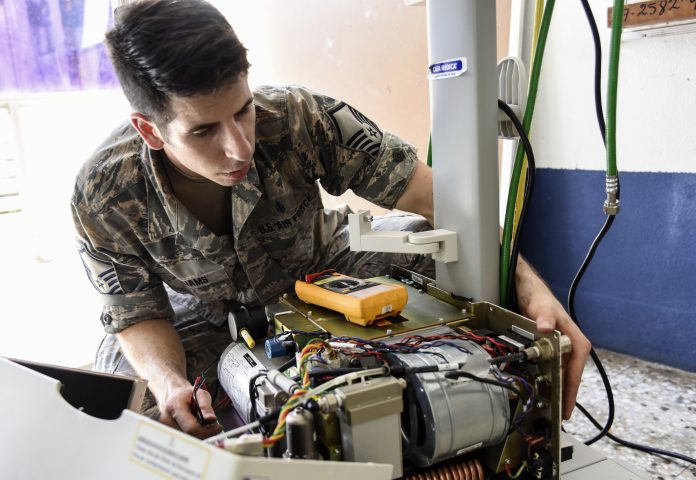The COVID-19 pandemic has uprooted our lives but it has also put immense pressure on the healthcare system. Countries have gone into lockdown to try and control the spread of the virus. Meanwhile, the healthcare system has been dealing with the influx of new cases. Despite stringent measures, the rate of new COVID-19 cases has gone up in most countries. COVID-19 patients develop breathing difficulties and ventilators are needed to help them breathe. Most countries are falling short of ventilators as the number of cases is increasing. In light of this, the Trump administration made its commitment to the healthcare industry. They said that they would provide 100,000 new ventilators in just 100 days and make the US the King of Ventilators.
Table of Contents
Aspirations to become the King of Ventilators
In late March, there was a huge demand for ventilators from the national stockpile by the healthcare sector. President Trump then made a bold claim on his administration’s behalf in order to quell the demands for ventilators. He stated that his administration would make the US the King of Ventilators and provide 100,000 ventilators in 100 days. This was a bold claim since the Department of Health and Human Services had not ordered any new ventilators. This had been the case since January when the COVID-19 crisis started. Within 3 weeks of this bold statement, the agency worked overtime to turn it into a reality. It spent 3 Billion dollars in order to get the country’s manufacturers to ramp up production drastically.
The Trump administration will meet its target by July 13. This is about a week over the deadline since the announcement was made by March 27. 200,000 ventilators are being produced by the end of 2020 as per the signed federal contracts. Before the pandemic, the US had 160,000 ventilators so these numbers will double the capacity. On 29th April, Trump boasted that they had already become the king of ventilators by producing thousands of them.
This is may sound like a relief to many, but the demand for new ventilators has been going down. Doctors have seen that patients put on ventilators have unusually high death rates. Hence, ventilators are used only as a last resort. This has driven down the demand for ventilators despite the pandemic raging across the country. About 80,000 people have already died from the coronavirus.
Export Options
Daniel Adelman instructs on health care analytics at Booth School of Business at the University of Chicago. He has done an analysis of this matter. He has revealed that the US government is purchasing more ventilators than it needs. It is purchasing almost twice the requirement even if you consider the worst-case scenario predictions of COVID-19 spread. He laments that the government is operating under the philosophy that they’d rather order too many than order less. This means that the government could opt for exporting ventilators to countries that need them. The US could provide thousands of ventilators to other countries to boost their response against COVID-19. This would make the US the King of Ventilators in true sense.
The Defence Production Act
The Strategic National Stockpile had 16,660 ventilators ready for deployment in the starting of March. This stockpile is the federal government’s own reserve of emergency medical supplies. As the pandemic ravaged through the country, many experts and governors commented that more ventilators are needed. They didn’t want people in the worst-hit states to be gasping for air as they suffered from the coronavirus.
Under the Defence Production Act, president Trump could force American companies to produce ventilators. Towards the end of March, Members of Congress and Governors were pushing president Trump to invoke this act and order ventilators. This Korean war-era law allows president Trump to control industrial production in terms of critical supplies. It is invoked in case of and emergency but president Trump initially resisted from invoking this act. He claimed that the private sector was bumping up production on its own.
On March 27, however, he changed his decision and invoked the Defence Production Act to produce more ventilators. After this, the Department of Health and Human Services placed a dozen big orders. Most of these were no-bid contracts aimed at making the US the King of Ventilators by boosting the production of ventilators.
New contracts to increase production
Typically, the US produces 29,000 ventilators annually. Despite existing companies claiming that they had increased shifts and bumped up the output, it would not be enough. Increased production capacity would be needed to make 100,000 ventilators in 100 days and make the US the King of Ventilators.
The Department of Health and Human Services placed an order of 30,000 ventilators for $489.4 million with General Motors. This deal was inked on 8th April and will be completed by end of August. They inked another deal with Ford and General Electric to produce 50,000 ventilators by 13th July. The cost of this deal was penned at $336 million. Assuming all the deadlines are met, 100,000 ventilators will be ready by mid-July. This would essentially fulfil President Trump’s promise to the country. The Department of Health and Human Services will be spending over $2.9 billion to procure 198,890 ventilators by the end of 2020.
The average cost per ventilator comes up to $14,618. Whether or not this is a good deal for Taxpayers is debatable. Medical device producers don’t publish prices but some analysis is done from the contracting data available. Zoll Medical sold a ventilator to the Department of Defence in December for $12,260. Under the new contract, Zoll is providing 18,900 of the same ventilators for $350 million. This amounts to about $18,500 per ventilator. This is an over 50% increase but the HSS claims that they are paying $12,100 per ventilator. The rest of the amount is for other protective equipment and attachments.
Final Thoughts
Looking at the current production rate, the US will soon be the King of Ventilators. President Trump has claimed that they have been victorious since his promise is fulfilled. The question now is that if these large quantities of ventilators are actually needed.








